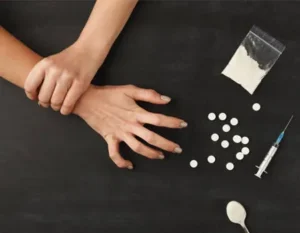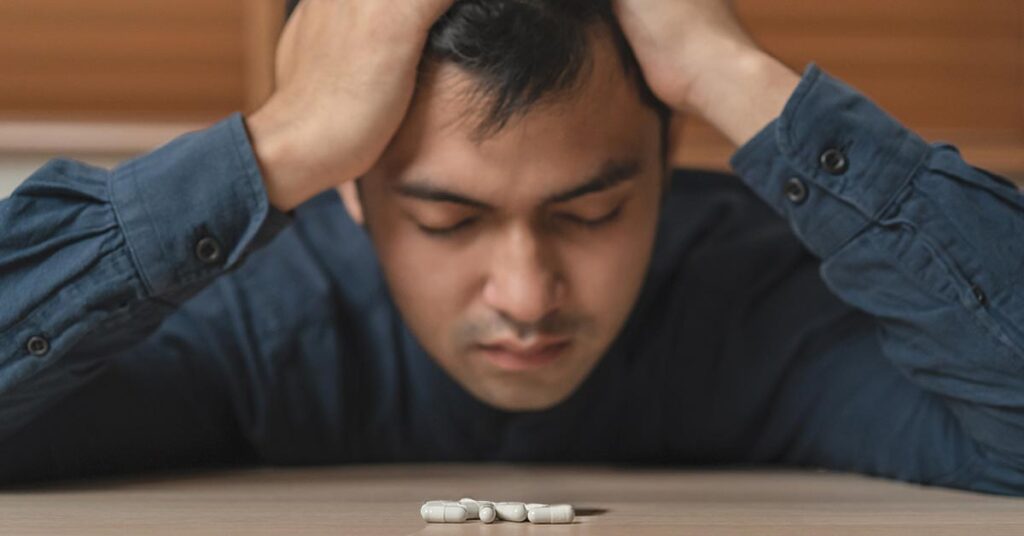Opioid addiction and dependence are critical public health issues that affect millions of lives around the world. These substances, which include both prescription pain relievers and illegal drugs like heroin, have a high potential for causing addiction due to their powerful effects on the brain. This blog post aims to demystify the nature of opioid addiction and dependence, explore the challenges faced by those affected, and discuss the available treatments that can offer hope and recovery.
Contents
What Is The Nature of Opioid Addiction And Dependence?
 Opioid addiction and dependence are complex conditions that stem from the prolonged use of opioids. This includes prescription medications like morphine, oxycodone, and hydrocodone, as well as illegal drugs such as heroin. Understanding the nature of these conditions involves exploring their biological, psychological, and social aspects.
Opioid addiction and dependence are complex conditions that stem from the prolonged use of opioids. This includes prescription medications like morphine, oxycodone, and hydrocodone, as well as illegal drugs such as heroin. Understanding the nature of these conditions involves exploring their biological, psychological, and social aspects.
- Biological Aspects
Opioids work by binding to specific receptors in the brain and other parts of the body, known as opioid receptors. These receptors are part of the body’s pain-relieving processes and are also linked to areas of the brain that regulate reward and pleasure. When opioids bind to these receptors, they can produce intense feelings of euphoria and pain relief. It can lead to increased use as the brain associates opioid use with pleasure and relief.
- Psychological Aspects
The psychological aspect of opioid addiction involves the compulsive desire to use opioids despite negative consequences. This can stem from various factors, including the relief from physical or emotional pain that opioids provide. It can make them highly reinforcing. Psychological dependence is characterized by cravings and obsessions with obtaining and using the drug. This often overpowers an individual’s ability to function without it.
- Social Aspects
Social factors also play a critical role in the development and perpetuation of opioid addiction. These can include environmental influences like peer pressure, family dynamics, socioeconomic status, and access to healthcare. The stigma associated with addiction can prevent individuals from seeking help, while social isolation can exacerbate the addiction as individuals may turn to opioids as a way to cope with loneliness or social anxiety.
Understanding the multidimensional nature of opioid addiction and dependence is crucial for addressing this epidemic effectively. It requires a comprehensive approach to help individuals recover and rebuild their lives.
Challenges Of Opioid Addiction And Dependence
Opioid addiction and dependence present several challenges that complicate treatment and recovery. These issues span medical, psychological, social, and systemic dimensions, making opioid addiction one of the most difficult public health crises to address effectively.
4 Common challenges
Here are the 4 most common challenges to be found:
Medical Challenges
- Withdrawal Symptoms: The physical symptoms of opioid withdrawal can be severe and include pain, nausea, vomiting, diarrhea, and extreme discomfort. These symptoms can make quitting opioids particularly difficult without medical assistance.
- Risk of Overdose: There is a high risk of overdose with opioids, especially with potent synthetic opioids like fentanyl. Overdose can lead to respiratory depression and death if not treated promptly.
- Co-occurring Disorders: Many individuals with opioid addiction also suffer from co-occurring mental health disorders such as depression, anxiety, or PTSD. This complicates treatment strategies and can hinder recovery efforts.
Psychological Challenges
- Cravings: Intense cravings for opioids can persist long after the physical dependence has been managed, posing a risk for relapse.
- Behavioral Dependency: The behavioral aspect of addiction, where the act of seeking and using opioids becomes ingrained in daily routines, can be challenging to break.
- Emotional Pain: Many individuals use opioids initially to cope with emotional or psychological pain, making it difficult to stop using the substance without effective alternative coping mechanisms.
Social Challenges
- Stigma: The stigma associated with drug addiction can prevent individuals from seeking help due to shame and fear of judgment. This can lead to isolation and a lack of support.
- Economic Impact: Addiction can lead to job loss, financial instability, and poverty, further limiting access to treatment and recovery resources.
- Family and Relationship Strain: Addiction often strains relationships with family and friends, leading to social isolation and decreased support, which are critical for recovery.
Systemic Challenges
- Access to Treatment: Effective treatment for opioid addiction, such as Medication-Assisted Treatment (MAT), is not always readily accessible or affordable for those in need. Disparities in healthcare access and insurance coverage can create significant barriers.
- Legal and Policy Issues: Criminalization of drug use can lead to legal issues that complicate an individual’s recovery journey, such as incarceration or a criminal record. This affects employment opportunities.
- Continuum of Care: There is often a lack of integrated services that address all aspects of addiction, from acute detoxification to long-term recovery support and mental health care.
Addressing these challenges requires a comprehensive approach that includes improving access to care, expanding education about addiction, enhancing social support networks, and advocating for policy changes that support recovery rather than punishment.
What Are Treatments To Help You Overcome?
 Overcoming opioid addiction involves a variety of treatment modalities that address both the physical and psychological components of the addiction.
Overcoming opioid addiction involves a variety of treatment modalities that address both the physical and psychological components of the addiction.
Medical approaches
Here are some of the most effective treatment options:
Medication-Assisted Treatment (MAT)
MAT is one of the most effective methods for treating opioid addiction and involves the use of medications along with counseling and behavioral therapies. The medications used in MAT are designed to help normalize brain chemistry, block the euphoric effects of opioids, relieve physiological cravings, and stabilize body functions without the negative effects of the abused drug. Common medications include:
- Methadone: Reduces cravings and withdrawal symptoms without producing a high.
- Buprenorphine: Also reduces cravings and withdrawal symptoms. And can be prescribed in a doctor’s office.
- Naltrexone: Blocks the effects of opioids at receptor sites in the brain and is used only after complete detoxification.
Detoxification
Medically supervised detoxification helps individuals safely withdraw from opioids while managing the symptoms of withdrawal. It is often the first step in a drug treatment program. Hence, it should be followed by further treatment to improve the chances of long-term recovery.
Counseling and Behavioral Therapies
These therapies are crucial for addressing the psychological aspects of addiction and can help modify the patient’s attitudes and behaviors related to drug use, as well as increase healthy life skills.
- Cognitive Behavioral Therapy (CBT): Helps individuals recognize and cope with situations that trigger the desire to use drugs.
- Contingency Management: Uses a voucher-based system where patients earn points, based on negative drug tests. They can exchange this for items that encourage healthy living.
- Motivational Interviewing: Increases motivation to change behavior and enter treatment.
Support Groups
Participation in support groups like Narcotics Anonymous (NA) or SMART Recovery can provide a supportive community of individuals who are facing similar challenges and can share experiences and coping strategies.
Long-term Follow-up
Long-term follow-up can help to prevent relapse and may include ongoing counseling, and medication if needed. And participation in support groups or other recovery support services.
Integrated Treatment for Co-occurring Disorders
Many individuals with opioid addiction also have co-occurring mental health disorders such as depression or anxiety. Integrated treatment approaches that address both addiction and mental health disorders simultaneously are often necessary.
Each individual’s path to recovery is unique, and treatment plans should be customized to meet each person’s specific needs. It’s important for anyone struggling with addiction to seek help from medical and mental health professionals to determine the most appropriate treatment options.
How Can I Prevent Opioid Addiction And Dependence?
 Preventing opioid addiction and dependence involves a combination of personal vigilance, informed healthcare practices, and supportive community and family strategies. Here are some preventative measures to help:
Preventing opioid addiction and dependence involves a combination of personal vigilance, informed healthcare practices, and supportive community and family strategies. Here are some preventative measures to help:
- Understand the Risks: Learn about the potential dangers of opioid use, even when prescribed by a doctor. Awareness of the addictive properties of opioids can lead to more cautious use.
- Drug Education Programs: Participate in or promote educational programs that provide comprehensive information about opioids, including their risks and the signs of addiction.
- Discuss Alternatives: When faced with a condition that requires pain management, discuss non-opioid alternatives with your healthcare provider. Many effective pain relief methods do not involve opioids, such as non-opioid medications, physical therapy, acupuncture, and mindfulness techniques.
- Set Clear Guidelines: If opioids are necessary, work with your doctor to set clear, strict guidelines for their use and closely follow the prescribed dosage and duration.
- Proper Disposal: Dispose of unused opioids properly to ensure they are not accessible for non-medical use. Many communities have drug take-back programs or drop boxes at pharmacies.
- Stress Management: Engage in regular physical activity, mindfulness practices, or hobbies that reduce stress. Stress is a significant trigger for substance use, so managing it effectively can reduce the risk of starting or escalating opioid use.
- Build a Support Network: Maintain strong connections with family and friends. Supportive relationships can provide emotional support and reduce the likelihood of substance abuse.
- Avoid High-Risk Situations: If you know that certain social settings or groups are likely to involve drug use, it’s wise to avoid them. Creating boundaries can help prevent exposure to potentially addictive substances.
- Self-monitoring: Be vigilant about your drug use habits. If you notice an increased reliance on opioids, even if they are prescribed, consult your healthcare provider.
Implementing these strategies can help minimize the risk of opioid addiction and encourage a healthy, informed approach to managing pain and stress.
Conclusion
In conclusion, understanding the complexities of opioid addiction and dependence is crucial for both individuals and communities. From recognizing the signs and challenges associated with addiction to exploring the various treatment options, it’s important to approach this issue with empathy and informed care.
Prevention plays a key role, and by educating ourselves, managing medications responsibly, and developing healthy habits, we can reduce the risk of opioid misuse. With the right support and strategies, recovery is achievable, offering hope and a pathway to a healthier life for those affected by opioid addiction.
